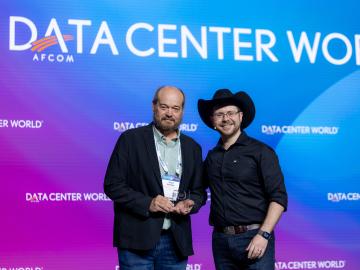
Filter News
Area of Research
- Biological Systems (2)
- Biology and Environment (18)
- Clean Energy (22)
- Climate and Environmental Systems (2)
- Computational Engineering (1)
- Computer Science (2)
- Data (1)
- Fusion and Fission (1)
- Materials (15)
- National Security (17)
- Neutron Science (5)
- Nuclear Science and Technology (2)
- Nuclear Systems Modeling, Simulation and Validation (1)
- Supercomputing (34)
Date
News Topics
- 3-D Printing/Advanced Manufacturing (2)
- Advanced Reactors (1)
- Artificial Intelligence (22)
- Big Data (28)
- Bioenergy (3)
- Biology (5)
- Biomedical (6)
- Biotechnology (2)
- Buildings (3)
- Chemical Sciences (2)
- Clean Water (2)
- Climate Change (17)
- Computer Science (32)
- Coronavirus (2)
- Cybersecurity (3)
- Decarbonization (2)
- Emergency (1)
- Energy Storage (1)
- Environment (24)
- Exascale Computing (6)
- Frontier (6)
- Fusion (1)
- Grid (5)
- High-Performance Computing (12)
- Hydropower (2)
- Isotopes (1)
- ITER (1)
- Machine Learning (11)
- Materials Science (5)
- Mathematics (2)
- Microscopy (2)
- Molten Salt (1)
- Nanotechnology (4)
- National Security (17)
- Net Zero (1)
- Neutron Science (2)
- Nuclear Energy (3)
- Physics (4)
- Quantum Science (1)
- Security (3)
- Simulation (6)
- Space Exploration (1)
- Statistics (1)
- Summit (8)
- Sustainable Energy (5)
- Transportation (5)
Media Contacts

To support the development of a revolutionary new open fan engine architecture for the future of flight, GE Aerospace has run simulations using the world’s fastest supercomputer capable of crunching data in excess of exascale speed, or more than a quintillion calculations per second.

Like most scientists, Chengping Chai is not content with the surface of things: He wants to probe beyond to learn what’s really going on. But in his case, he is literally building a map of the world beneath, using seismic and acoustic data that reveal when and where the earth moves.

Paul Abston, leader of the HPC Infrastructure Operations Group of the National Center for Computational Sciences and manager of the Oak Ridge Leadership Computing Facility’s data center, has been named Data Center Manager of the Year for 2023.

For decades, scientists sought a way to apply the outstanding analytical capabilities of neutrons to materials under pressures approaching those surrounding the Earth’s core.

Inspired by one of the mysteries of human perception, an ORNL researcher invented a new way to hide sensitive electric grid information from cyberattack: within a constantly changing color palette.

Climate change often comes down to how it affects water, whether it’s for drinking, electricity generation, or how flooding affects people and infrastructure. To better understand these impacts, ORNL water resources engineer Sudershan Gangrade is integrating knowledge ranging from large-scale climate projections to local meteorology and hydrology and using high-performance computing to create a holistic view of the future.

Researchers at ORNL have developed a machine-learning inspired software package that provides end-to-end image analysis of electron and scanning probe microscopy images.

ORNL has named Prasanna Balaprakash to direct its artificial intelligence efforts. The laboratory’s AI Initiative coordinates efforts across its varied research directorates to harness the power of AI and data science in tackling some

The old photos show her casually writing data in a logbook with stacks of lead bricks nearby, or sealing a vacuum chamber with a wrench. ORNL researcher Frances Pleasonton was instrumental in some of the earliest explorations of the properties of the neutron as the X-10 Site was finding its postwar footing as a research lab.
The Autonomous Systems group at ORNL is in high demand as it incorporates remote sensing into projects needing a bird’s-eye perspective.


